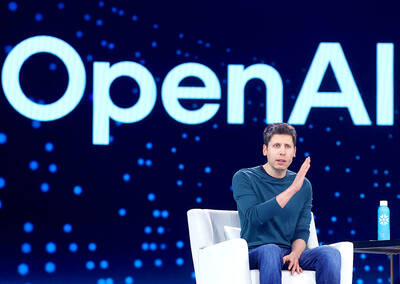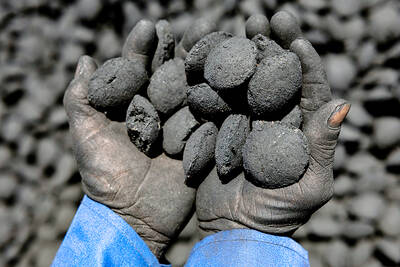Oil posted the longest string of quarterly gains in more than a decade as impending supply disruptions threaten to fracture a global market with little margin for error.
Futures rose 1.6 percent in New York on Friday, while London-traded crude racked up its fifth quarterly advance, a streak not seen since the first half of 2008.
This historical echo comes as consumers once again eye supply disruptions and worry about the availability of backup supplies, just as they were a decade ago when the benchmark hit an all-time high above US$147.
“The market is getting more nervous about Iranian sanctions especially on reports that Sinopec is cutting back” on purchases from the Persian Gulf nation, said Phil Flynn, a senior market analyst at Price Futures Group.
Oil has risen to the highest in almost four years in London after OPEC showed little enthusiasm for raising output despite US President Donald Trump’s demand for lower prices.
The world is likely to need additional supplies as US sanctions dissuade major importers, including India and South Korea, from purchasing Iranian oil.
Chinese refiner Sinopec is slashing crude loadings from the nation this month, Reuters reported.
“There is concern in the market that the loss of barrels from Iran and Venezuela is not going to be made up for through extra supplies from particularly Saudi Arabia and Russia,” said Gene McGillian, manager of market research at Tradition Energy. “Worries about trade relations affecting economic growth have fallen away.”
Trading houses such as Trafigura Group Pte Ltd and Mercuria Energy Group Ltd have predicted prices could exceed US$100 a barrel.
Banks, including Bank of America Corp and JPMorgan Chase & Co, are not quite that bullish, but are lifting their forecasts.
Meanwhile, BP PLC and Total SA cautioned that such a rally would hurt demand, especially as US-China trade tensions escalate.
Brent for November delivery advanced US$1 to settle at US$82.72 a barrel on the ICE Futures Europe exchange in London. The contract gained 5 percent for the week and expires on Friday.
West Texas Intermediate for November delivery rose US$1.13 to close at US$73.25 on the New York Mercantile Exchange — an increase of 3.5 percent fo the week.
It is trading at an US$9.47 discount to Brent. Total volume traded was about 15 percent below the 100-day average.
Investors are now watching to see what Trump will do next after US Energy Secretary Rick Perry ruled out the release of oil from the Strategic Petroleum Reserve, saying the move would have “a fairly minor and short-term impact.” Earlier this week, the president accused the Organization of Petroleum Exporting Countries of “ripping off the rest of the world.”
Gasoline futures rose 0.9 percent to US$2.1012 a gallon.

DIVIDED VIEWS: Although the Fed agreed on holding rates steady, some officials see no rate cuts for this year, while 10 policymakers foresee two or more cuts There are a lot of unknowns about the outlook for the economy and interest rates, but US Federal Reserve Chair Jerome Powell signaled at least one thing seems certain: Higher prices are coming. Fed policymakers voted unanimously to hold interest rates steady at a range of 4.25 percent to 4.50 percent for a fourth straight meeting on Wednesday, as they await clarity on whether tariffs would leave a one-time or more lasting mark on inflation. Powell said it is still unclear how much of the bill would fall on the shoulders of consumers, but he expects to learn more about tariffs

NOT JUSTIFIED: The bank’s governor said there would only be a rate cut if inflation falls below 1.5% and economic conditions deteriorate, which have not been detected The central bank yesterday kept its key interest rates unchanged for a fifth consecutive quarter, aligning with market expectations, while slightly lowering its inflation outlook amid signs of cooling price pressures. The move came after the US Federal Reserve held rates steady overnight, despite pressure from US President Donald Trump to cut borrowing costs. Central bank board members unanimously voted to maintain the discount rate at 2 percent, the secured loan rate at 2.375 percent and the overnight lending rate at 4.25 percent. “We consider the policy decision appropriate, although it suggests tightening leaning after factoring in slackening inflation and stable GDP growth,”

Meta Platforms Inc offered US$100 million bonuses to OpenAI employees in an unsuccessful bid to poach the ChatGPT maker’s talent and strengthen its own generative artificial intelligence (AI) teams, OpenAI CEO Sam Altman has said. Facebook’s parent company — a competitor of OpenAI — also offered “giant” annual salaries exceeding US$100 million to OpenAI staffers, Altman said in an interview on the Uncapped with Jack Altman podcast released on Tuesday. “It is crazy,” Sam Altman told his brother Jack in the interview. “I’m really happy that at least so far none of our best people have decided to take them

As they zigzagged from one machine to another in the searing African sun, the workers were covered in black soot. However, the charcoal they were making is known as “green,” and backers hope it can save impoverished Chad from rampant deforestation. Chad, a vast, landlocked country of 19 million people perched at the crossroads of north and central Africa, is steadily turning to desert. It has lost more than 90 percent of its forest cover since the 1970s, hit by climate change and overexploitation of trees for household uses such as cooking, officials say. “Green charcoal” aims to protect what